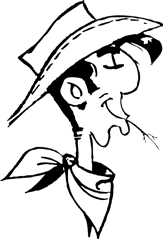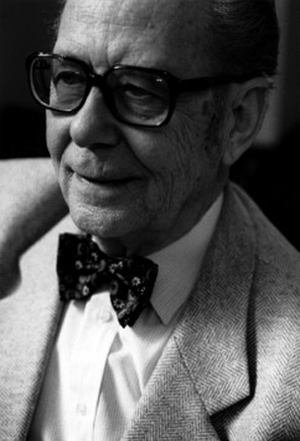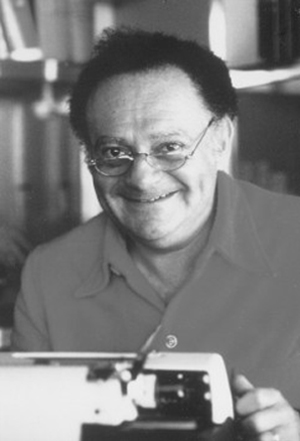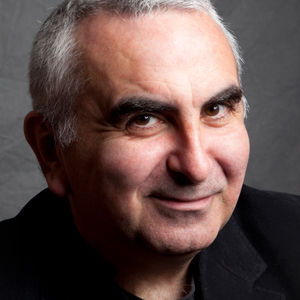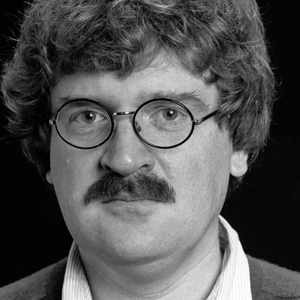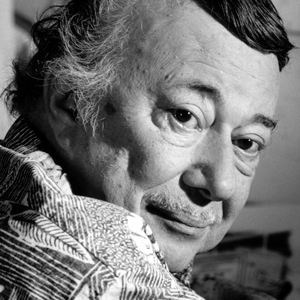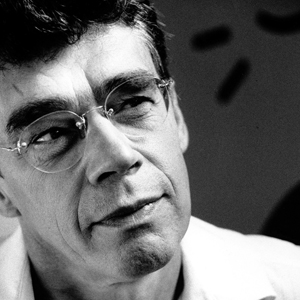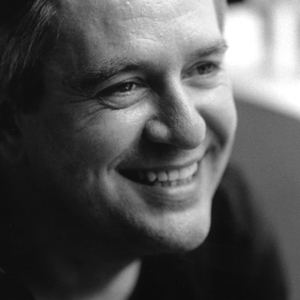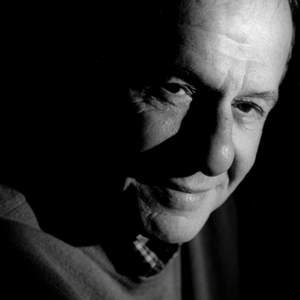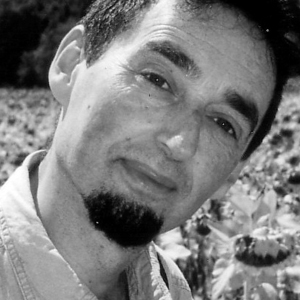Authors
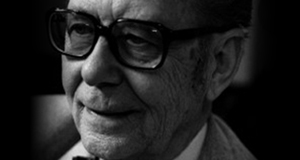
Maurice de Bevere, a.k.a. ‘Morris’, one of the founding fathers of bande dessinée, was born in Courtrai on 1 December 1923. After graduating from secondary school and studying law, he learned animation techniques from the Jean Image art courses and soon joined the Compagnie Belge d’Actualités (Belgian News Company), an animation studio where he met André Franquin, Eddy Paape and Peyo. In 1945, he was asked to illustrate the humour magazine Le Moustique, for which he drew over 250 covers.
It was precisely at that time that he chose the pseudonym Morris to write and draw the first humour-filled adventures of Lucky Luke. They appeared for the first time – under the title Arizona 1880 – in the 1947 Almanach Spirou.
Lucky Luke is the archetypal big-hearted lonesome cowboy. He’s also the perfect righter of wrongs, unflappable and likable, always accompanied by his wise and wise-cracking companion Jolly Jumper, as well as the stupidest dog in the West, Rin Tin Can. Around them, Morris created a whole gallery of colourful characters, to which he added actual personalities from the American West: the four mean but dumb Dalton brothers, Billy the Kid, Judge Roy Bean, Calamity Jane... As well as other historical figures such as the illustrious actress Sarah Bernhardt. Lucky Luke quickly became one of the key works of the international comics scene, thanks to his creator’s simple, expressive and oh so very effective art style.
From 1948 to 1955, Morris travelled the United States with his friends André Franquin and Joseph Gillain (Jijé). There he rubbed shoulders with the satirical cartooning specialists of Mad magazine: Kurtzman, Davis and Wood. In New York he met René Goscinny, whom he chose as his scriptwriter after returning to Europe. These two legends of the Ninth Art would go on working together in perfect union until Goscinny’s death in 1977. Some 20 writers would succeed him at Morris’s side. To this day, the adventures of Lucky Luke represent almost 90 titles, with translations into 30 languages and several hundred million copies sold. Morris had a burning passion for cinema, which would cross over to Lucky Luke for the first time in 1971 with Daisy Town, with the help of René Goscinny, Pierre Tchernia and Claude Bolling (Studio Belvision, Brussels).
Other feature films would follow: The Ballad of the Daltons in 1978 (Studios Idefix, Paris) and Les Daltons en Cavale (The Daltons on the Lam) in 1983 (Studios Hanna-Barbera, Los Angeles). In 1984, Gaumont, Hanna-Barbera and France 3 produced for television an animated series – 26 episodes of 26 minutes each, based on the comics. In 1991, Dargaud Films, I.D.D.H. and France 3 created a second 26-episodes series, while Terence Hill played the Lonesome Cowboy in 10 Lucky Luke ‘live’ movies. The hero’s ever-growing popularity also led to a multitude of increasingly diverse tie-in merchandise: soft toys, puzzles, games, clothes, shoes, school supplies, watches, figurines... Along with the other characters from his world, Rin Tin Can and the Daltons, Lucky Luke was often enrolled in advertising campaigns, associated with product lines or adapted in various multimedia forms. In 1987, Morris created the spin-off series Rantanplan (Rin Tin Can), written at first by Jean Léturgie and Xavier Fauche. In 1990, he launched Lucky Production, now called Lucky Comics, in partnership with publisher Dargaud.
Recipient of numerous honours, Morris especially appreciated the medal that the World Health Organisation awarded him in 1988 in Geneva for removing Lucky Luke’s ever-present cigarette. Another exceptional homage came on 27 June 1992, when the Grand Prix Academy awarded him the special 20th anniversary Grand Prix at the Angoulême International Comics Festival – recognition by his peers. It was therefore perfectly natural that in 1996 he would preside over the international celebrations of Bandes Dessinées’s centenary. Especially since, as an accomplished polyglot, he could speak seven or eight languages.
Lucky Luke’s 50th anniversary in 1997 was celebrated in France, Belgium and Switzerland, but also in Germany, Portugal and across Scandinavia. A slew of events that culminated in Paris on 10 September 1997 – 50 years to the day after Morris created the emblematic image of the lonesome cowboy riding into the Old West’s setting sun. On 20 October 1998, the French Minister of Culture and Communication raised Morris to the rank of Officer of the Order of Arts and Letters. It should also be noted that he was behind the classification of Bandes Dessinées as the ‘Ninth Art’, an expression he coined himself; just as he is credited with the famous ‘faster than his own shadow’ (Le Robert – Idiom dictionary), now used abundantly in French in numerous and varied contexts. Morris passed away on 17 July 2001, aged 77.

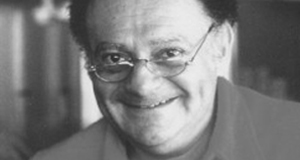
Born on 14 August 1926 in Paris, René Goscinny spent his childhood between Buenos Aires and the Pampas in Argentina. After a promising start as an deputy-assistant-accountant in a used tyres recycling factory, he joined an advertising agency as a trainee artist.
At 19 he left to take America by storm – and more precisely the Walt Disney Studios. Soon promoted to unemployed artist, he never got to meet the master, but as chance would have it happened upon the future Mad magazine gang – Harvey Kurtzman, Jack Davis and Will Elder – and immediately felt a sense of kinship : Anglo-Saxon humour coincided perfectly with his own way to look at things.
He met Morris in New York, Jean-Michel Charlier in Brussels and Albert Uderzo in Paris, where he ran the local office of World Press, a small Belgian agency.
At a time where comics authors were paid peanuts, the answer lay in increased production. Goscinny, having realised that his talents were more suited to scripting than drawing, launched a multitude of series (including Oumpah-Pah, Strapontin and Luc Junior). He typed miles of articles and short stories (for Pariscope and L’Os à Moelle, among others), concurrently with writing the etiquette column in women’s magazine Bonnes Soirées. In 1955 he took over writing duties for Lucky Luke and created, with Sempé, a bande dessinée version of Le Petit Nicolas. The latter character would eventually meet true fame in its illustrated texts form, published a few years later in newspaper Sud Ouest, then magazine Pilote.
In 1956 came a brutal and irreparable break with World Press: Goscinny, Charlier and Uderzo, intent on promoting their as yet unrecognised profession, drafted a rather inflammatory Authors Charter. They were fired almost immediately, and found themselves blacklisted by every publisher. Along with Jean Hébrard, one of World Press’s sales managers, they created a small press agency called Edifrance.
In 1959, they took an active part in the launch of weekly magazine Pilote. In it, Goscinny signed the first episode of the adventures of Asterix with Uderzo, before sharing editor-in-chief duties with Charlier.
In 1962, he created Iznogoud, a series illustrated by Tabary.
In 1965, he asked Marcel Gotlib to work with him on Pilote’s Dingodossiers.
After May 1968, he added the unforgettable ‘current news’ pages to the magazine then hosted the Monday Morning Campfire on radio station Europe 1 with Gébé, Fred and Gotlib. In the meantime, with no promoting whatsoever but solely through word of mouth, the diminutive Gaul underwent an irresistible rise: in 1965, the first French satellite was named Asterix and, a few years later, the series was translated into some 30 languages, including Esperanto and Latin... As the Asterix phenomenon shook the world of Franco-Belgian comics, transforming it from a childish pastime into a respectable art form, Goscinny, who had an unparalleled gift for spotting and nurturing talent, turned Pilote into a creative laboratory where a new wave of Bande Dessinée flourished with Gotlib, Fred, Jean ‘Moebius’ Giraud, Reiser, Cabu, Claire Bretécher, Mandryka, Jean-Claude Mézières, Philippe Druillet, Jacques Tardi, F’Murr, Enki Bilal...
In 1973, Mandryka, Bretécher and Gotlib walked away from Pilote to run the brand new Echo des Savanes. Goscinny stepped down from his role as editor-in-chief, offering the job instead to Guy Vidal.
In 1974 he created, with Uderzo and Georges Dargaud, the Studios Idefix.
By 1976, while the studios produced The Twelve Tasks of Asterix, the Gaul warrior’s 23rd album was published with a run of 1.3 million copies. Goscinny was full of various projects: publishing, television (even though it had an atmosphere like ‘a post office going bankrupt’) and especially cinema. Scriptwriter of Pierre Tchernia’s delightful Viager in 1972, he loved and was increasingly drawn to this other way of making people laugh – for that was always his calling. But the story came to an end on 5 November 1977, even as the Studios Idefix team were working on The Ballad of the Daltons, thereby keeping alive his oldest dream. After all, it was to make it big in the Walt Disney studios that he’d once gone to America...

